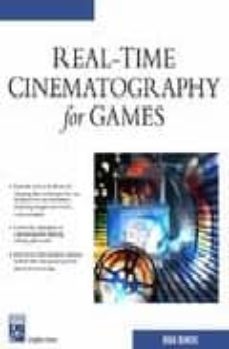REAL-TIME CINEMATOGRAPHY FOR GAMES de BRIAN HAWKINS
Ficha técnica
- REAL-TIME CINEMATOGRAPHY FOR GAMES
- BRIAN HAWKINS
- Número de páginas: 326
- Idioma: INGLÉS
- Formatos: Pdf, ePub, MOBI, FB2
- ISBN: 9781584503088
- Editorial: CHARLES RIVER MEDIA
- Año de edición: 2005
Audio libro gratis descargar mp3 REAL-TIME CINEMATOGRAPHY FOR GAMES
Overview
This book teaches programmers and artists how to incorporate tried-and-true filmmaking techniques into their games. Topics covered include the essential areas of camera movement, programming techniques using C++, filters, lighting, sound effects, interactive music, movement, and dialog, and voice recognition technology.
Today's game audiences expect Hollywood-quality cinematography. But to produce this quality in games, programmers need to understand the traditional film principles of lighting, camera positioning, and motion. Unlike movies, games provide non-linear, interactive storytelling, so to use film and T.V. techniques effectively, the techniques need to be modified for games. Real-Time Cinematography for Games provides this translation by teaching programmers and artists how to incorporate tried-and-true filmmaking techniques into their games. Beginning with an overview of filmmaking and cinematography basics, the book teaches how to tell a compelling story using camera placement based on character and environment. It explains how to handle a camera for panning, zooming, and cradle movement, and it details how to program these techniques into your games through code examples. From there, camera lenses and methods for achieving a variety of effects with software cameras are explored. Hands-on examples illustrate the importance of good lighting and how to handle transitions to new lighting arrangements. The next part of the book covers the essential areas of filters, sound effects, interactive music, movement, and dialog, including coverage of current voice recognition technology. The book wraps up with coverage of directing essentials. Programmers will find the entire book extremely useful, and designers and artists will find the large amount of creative uses of filmmaking techniques invaluable. Every chapter is written with two major parts: creative and technical. The creative section looks into the techniques and practices of the film industry and teaches how artists and designers can usethese techniques in games. The technical sections then explain how to implement these techniques into games through practical code and equations. The technical sections require knowledge of basic programming and computer graphics concepts. This is the one resource programm


0コメント